
Date: March 5, 2002
Part I: Overview and The Races
Ever since Blizzard announced Warcraft III back in September of 1999 gamers have been anxiously awaiting the next chapter in one of the best-selling RTS sagas of all time. From the beginning it was clear that Warcraft III had a lot to live up to. Its predecessor, Warcraft II, has proven to be one of Blizzard’s most enduring titles. Although first released in 1995 and updated in 1999 for Battle.net support, WC II still occupies shelf-space today. This is almost unheard of for a game that debuted back in the ancient days of DOS.
Initially, Warcraft III was to be a totally 3D game played from the perspective of the Hero unit and eschewed such traditional RTS tactics as base-building and resource gathering. Along the way, Blizzard decided to scrap the prototype design and return to a more traditional method of gameplay, while simultaneously trimming the number of playable races from six to four. Because so much of the game was designed around the now defunct 3D view, Blizzard was forced to redesign a large section of the game as well.
As the months and years passed gamer’s expectations (and doubts) have continued to rise. The game industry is full of over-hyped games that tantalized the market for years, only to burst forth into the light of day as buggy, half-formed creations whose only claim to fame was the occasional glimpse of brilliance buried underneath a mediocre and sub-standard product. Nor would Blizzard have been the first company to drop the ball on a promising-looking sequel or to promise far more than it delivered. Sierra On-Line, Interplay, and Origin are all examples of once flourishing game companies who have dwindled to sad remnants of their former selves, due at least partially to terrible management of their core franchises.
Fortunately for the gaming community, however, Blizzard doesn’t appear to buy into the corporate “develop-a-great-franchise-and-milk-it-for-all-its-worth” mindset that has driven so many great gaming series (and franchises) into the ground. Warcraft III may be late, and it has definitely been heavily hyped, but even in its raw beta form the game looks poised to deliver some of the most addictive gameplay Blizzard has ever managed to conjure up.
The Battle.Net and Game Selection Interfaces
Blizzard has made a number of changes to its popular Battle.net services that simplify the process of getting into a game. Rather than requiring you to select a game manually, Battle.net will now automatically match you with another group of players based on criteria you select. Game type, number of opponents, and map preferences are all selected by the player, who then hits “Find Game.” Battle.net searches until it finds a game compatible with your selections and automatically starts it. For players who prefer to select their own opponents or play with a specific group of people, it’s still possible to build specific games using the “Custom Game” feature.
While it’s obvious the interface is still in beta (a number of important functions, such as logging, are not yet enabled) its early form is still impressive. Stability is very good—I’ve had only two crashes after weeks of playing, and Blizzard’s game-matching service works flawlessly and generally quickly. Even when gaming at extremely off hours, I’ve had no problems finding people to play against.
The Races
Of the six originally proposed races, the Night Elves, Orcs, Humans, and Undead have made it into the game as playable races, while the fifth race (the Burning Legion) is unplayable in multiplayer r(at least in the beta), but will appear in the single player version. It’s not possible to give a detailed account of the races at the moment. The beta is still in its early stages and at least one Night Elf unit has yet to be added but we’ve assembled an overview of each race based on our experience with each.
Oftentimes in this overview we’ll be referring to the various races in Starcraft. This is not to give the impression that the races in Warcraft III are just Starcraft races rehashed. Rather, we’ve referred to SC because many people interested in Warcraft have at least some experience with Starcraft, and thus we can use one to effectively explain the other.
Humans
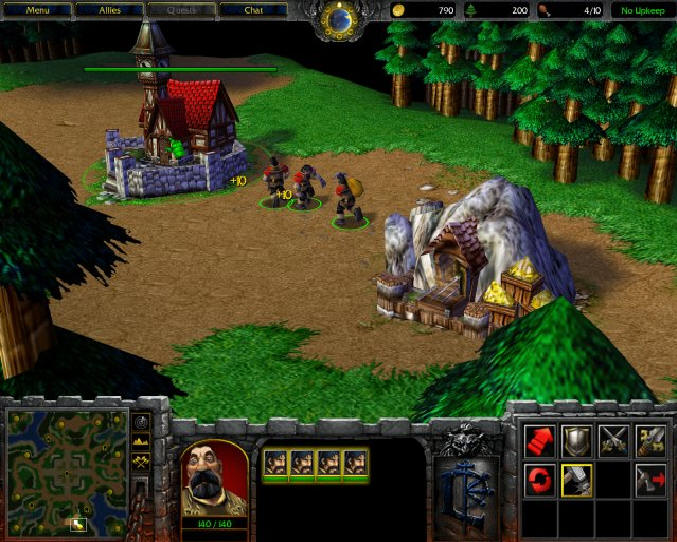
Humans were the first race I played in the WC3 beta and the one I was most curious about. While they may seem bland to some given the exotic possibilities offered by Night Elves or Undead, Blizzard has demonstrated a consistent ability to keep human-based (or Terran) races engaging and fun to play and Warcraft III looks as though it will continue this trend.
It’s clear from the available units that humans have made some technological advances since the days of Warcraft II. Dwarven riflemen have replaced the original Elven bowman as the initial human ground-to-air unit, while Gnome Flying Machines have been upgraded with attack capabilities. Also, Dwarven mortar teams have replaced the old demolition squads. Other units, such as footmen, knights, and gryphons remain essentially unchanged from their Warcraft II counterparts (although hit points, damage, etc have all been adjusted).
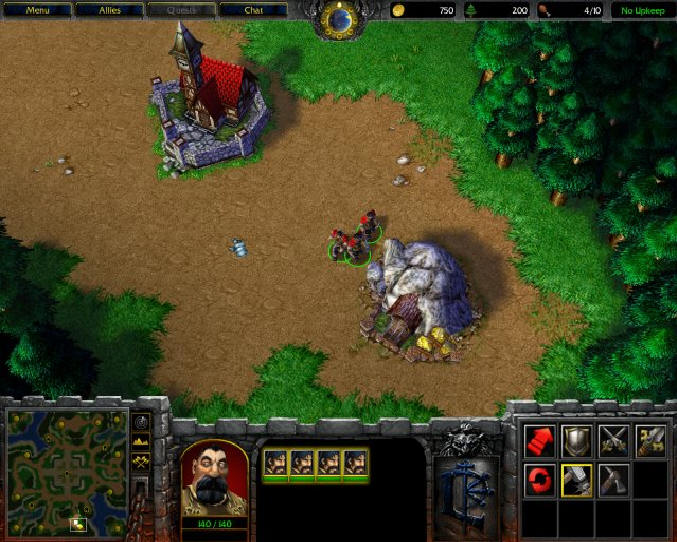
The building architecture and unit voiceovers were both also designed with a strong look back to Warcraft II, while simultaneously demonstrating unparalleled levels of detail for a Warcraft game. Similarly, many of the human characters are voiced by the same people who voiced them in Warcraft II (or by very good imitators).
Like the Terrans in Starcraft, Humans are probably the best race with which to step into Warcraft III. Human Knights remain Warcraft’s equivalent of heavy armor divisions and Priests and Sorceresses have a wide range of effective spells and buffs, including the ability to slow and polymorph units. The human race is best defined in relation to the others. While they lack the sleek speed of the elves or the corrupted nature of the undead, playing humans in Warcraft III is hardly a bland experience. Their own unique mixture of characteristics is sufficient to give them a very different feel compared to the other races, while keeping them tied to the history of Azeroth and their own previous incarnations in earlier Warcraft games.
Orcs
The orcs are the race that has changed the most since first arriving on Azeroth in Warcraft: Orcs and Humans. Originally viewed as heartless, mindless savages, capable only of murder and wanton destruction, Blizzard’s vision of the orcs has changed considerably with Warcraft III.
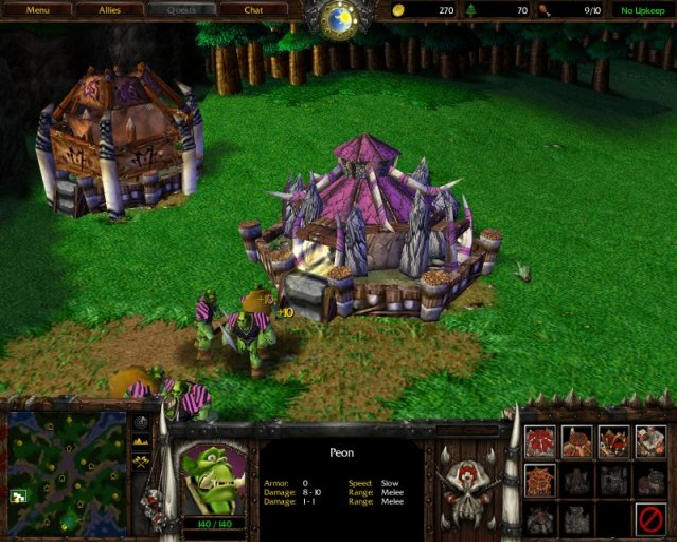
On their own world of Draenor, before the invasion of Azeroth, the orcs possessed a culture and society of their own, but were corrupted, twisted, and enslaved by the Burning Legion into the twisted Horde that waged war on the Alliance. Now, after years on Azeroth, the orcs are slowly reclaiming their own traditions, sense of culture, and values.
Like humans, the orcs remain strongly linked to Warcraft II, though not so directly. Orcish peons, grunts, and catapults are all present, but Troll Headhunters armed with spears have replaced the axe-throwers and berserkers of Tides of Darkness. New orc units include Wolf Riders, Wyvern Riders, Witch Doctors, and Shamans, among others. The dragons and other dark creatures formerly allied with the orcs are gone, however, as the orcs are no longer evil.
As with the humans, the orc buildings look similar to their Warcraft II counterparts and maintain the thematic consistency that has been established across the series. Many of the voiceovers are also similar. Players can look forward to hearing cries of “Zug Zug” once again, as well as the still-funny orcish grumblings, grunts, and muses on life.
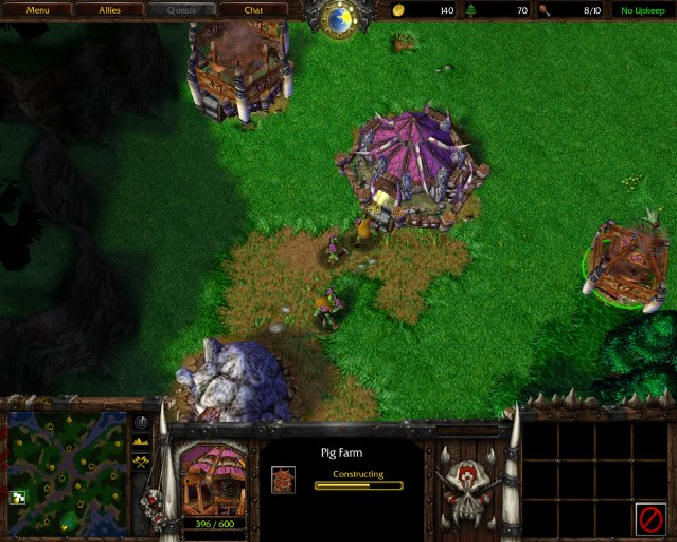
The orcs themselves have developed a distinct culture in Warcraft III, with a distinct barbaric/shamanistic flare. Gone is the sense that these are mindless evil Hordes bent on destroying all life. Rather, the orcs are portrayed as powerful and deadly warriors, trained in the untamed wild, and wielding deadly mystical powers drawn from nature itself.
The orc units tend to be larger and slower than the humans, but their sheer power often makes up for a lack of speed. It’s also refreshing to see more units that feel truly unique to the Orc race. The “humans in funny suits” feeling is gone from the Orcs in WC3.
The Undead
The Undead are one of two new races in Warcraft III and, oddly enough, play like a cross between the Zerg and the Protoss from Starcraft. Like the Protoss, Undead Acolytes summon buildings and are then free to move about and complete other tasks, but their early units tend to be cheap, fast, and consume few resources—much like the Zerg.
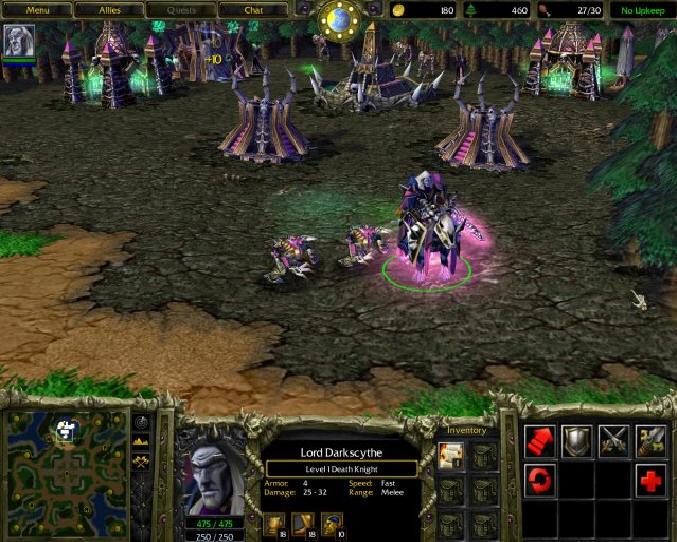
The Undead have an extremely distinctive feeling to them, even at this stage in the Beta. This is partly aided by excellent visuals. As an Undead town expands and grows, the foul Blight (similar to Zerg Creep) extends with it. Ground touched by the Blight grows foul and oozes a green mist, trees look sickly and are fog enshrouded, and the entire atmosphere reeks of death and decay.
The Undead legions are somewhat weak in ground-to-air combat at the moment, though this may be resolved later in the beta. At the moment, however, it’s hard to characterize them in terms of a playing style. The Undead have a nice mesh of slow-moving tanks, quick-striking scouts, and powerful spell casters (the Corpse Explosion spell from Diablo II makes an appearance here).
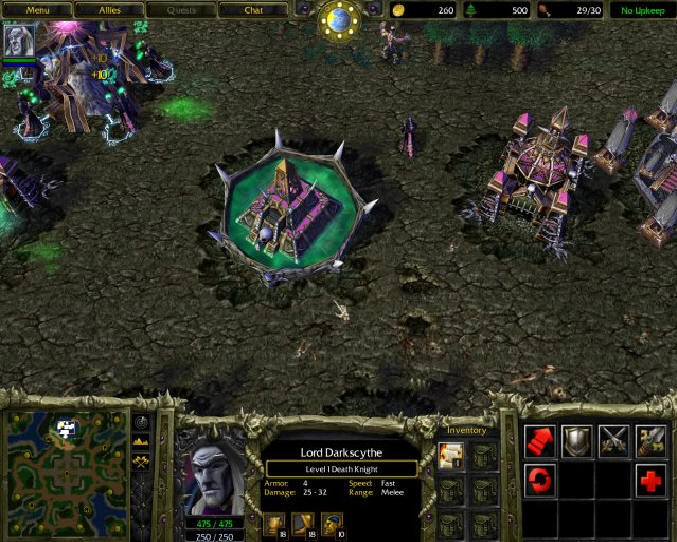
What makes this race shine isn’t necessarily any particular unit, but the total ambiance of playing them. From the sickly pale light and ominous magical drawings that shine forth from any building in the process of being summoned to the sinister voiceovers and ominous sound effects, the Undead truly shine.
The Night Elves
I’m honestly not quite sure if the Night Elves qualify as a new race or not. There have been Elven Archers in other Warcraft games, but these were quite distinctly “day” elves. According to Blizzard, the Night Elves are, in fact, the oldest race on Azeroth and have fought the Burning Legion before, but in the course of that ancient war, the world was nearly destroyed and the Night Elves homeland was shattered and lost beneath the waves. Afterwards, the Night Elves withdrew into secrecy and isolation and have had little dealings with he world as a whole for centuries until now.

Like the other Warcraft III races, the Night Elves visual design beautifully complements the race, and in this case, ‘beautiful’ is the right word to use. In keeping with their deep connection to nature, most of the Night Elf buildings aren’t buildings at all but are mammoth treants who can uproot to move or fight, while rooting into the ground to build units. While the mobile production center idea has been done before, it has never been done in such a dramatic way. Unlike the Terrans from Starcraft, where mobility was part of their overall strategy but did integral to the race, the Night Elves organic treants / buildings truly feel both strategic and integral to the race.
The Night Elves are quick and agile in battle, with many of their attacks focused on mid-to-long range weapons. Of the basic units, only their weapons are able to attack both land and air units, though the Night Elf archers lack the staying power of some of the other early units.
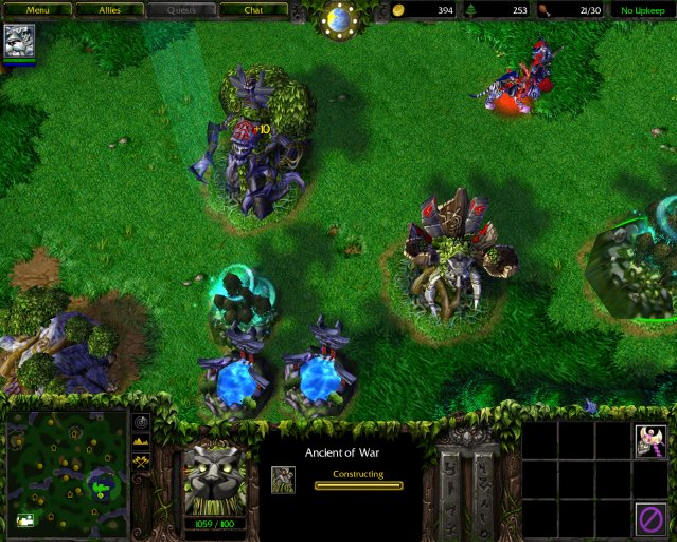
The other Night Elf units are similarly designed, with an emphasis on speed over strength. Night Elf units also possess the shadow meld ability innately (a power that allows them to become invisible when standing still) and also have certain ways of scouting remote areas of the map that other races lack. They are currently one of the most-played races on Battle.net, though this is at least partially due to several balance issues concerning them (all of which will be undoubtedly dealt with by the time the shipping version is released).
This is the end of Part I—in Part II we’ll explore Heros, the economy, and the various role-playing aspects of the game that have appeared thus far.
===================================
Pssst! We've updated our Shopping Page.
===================================